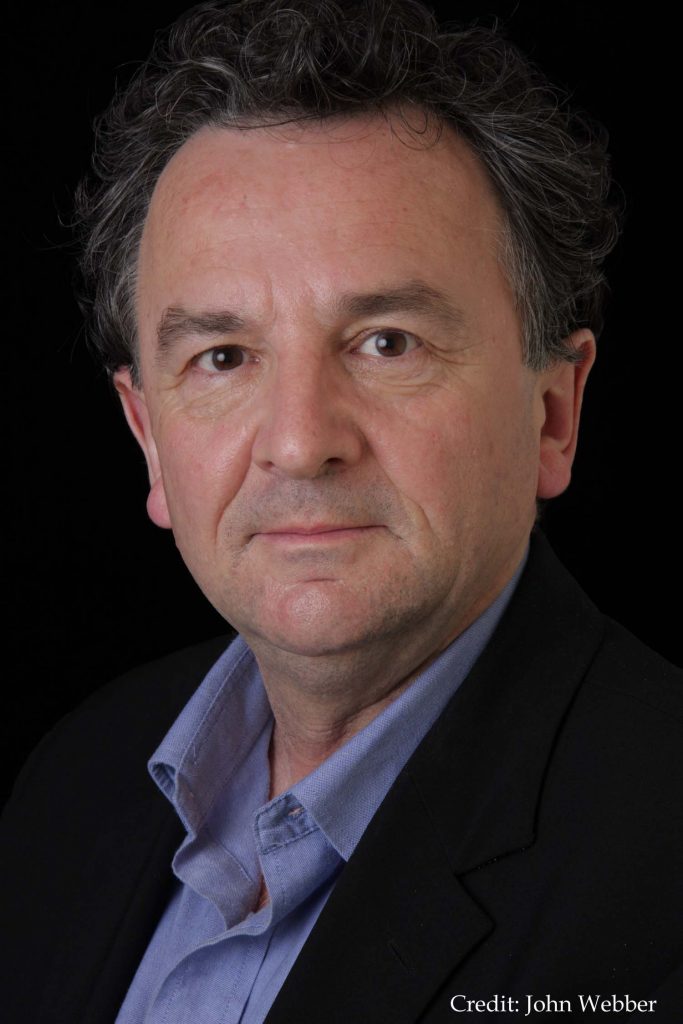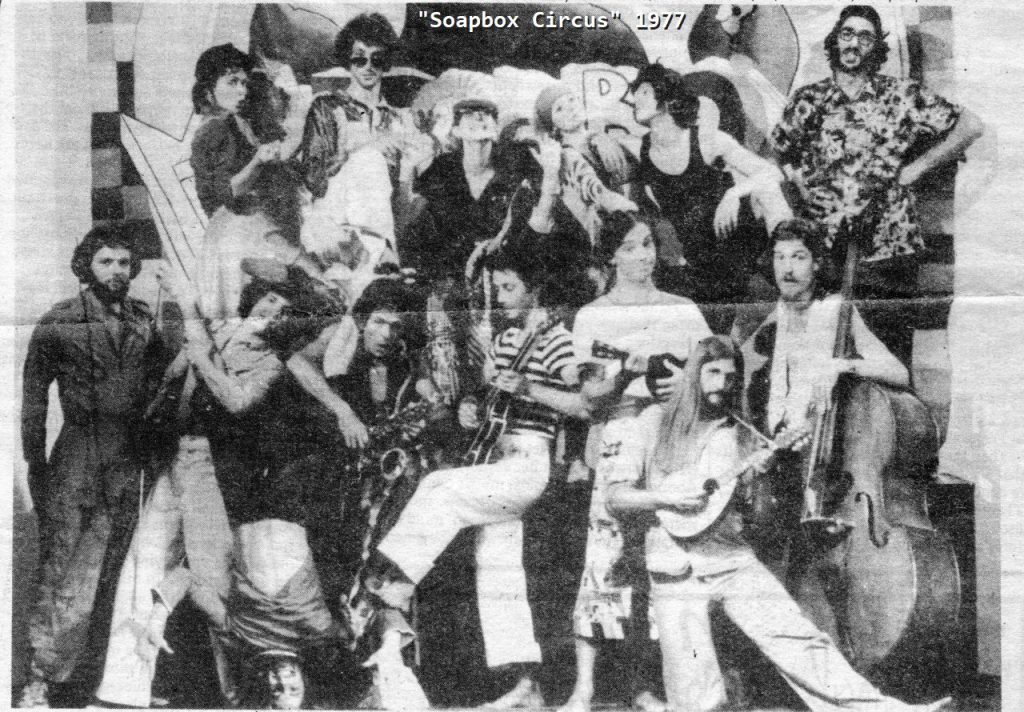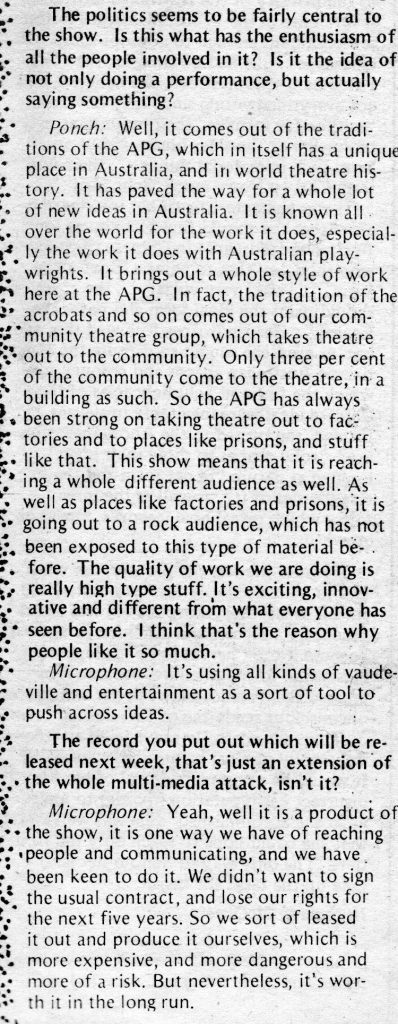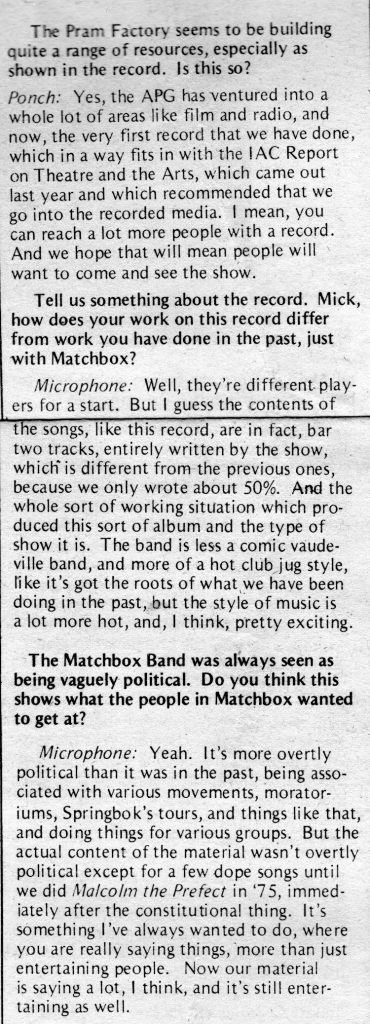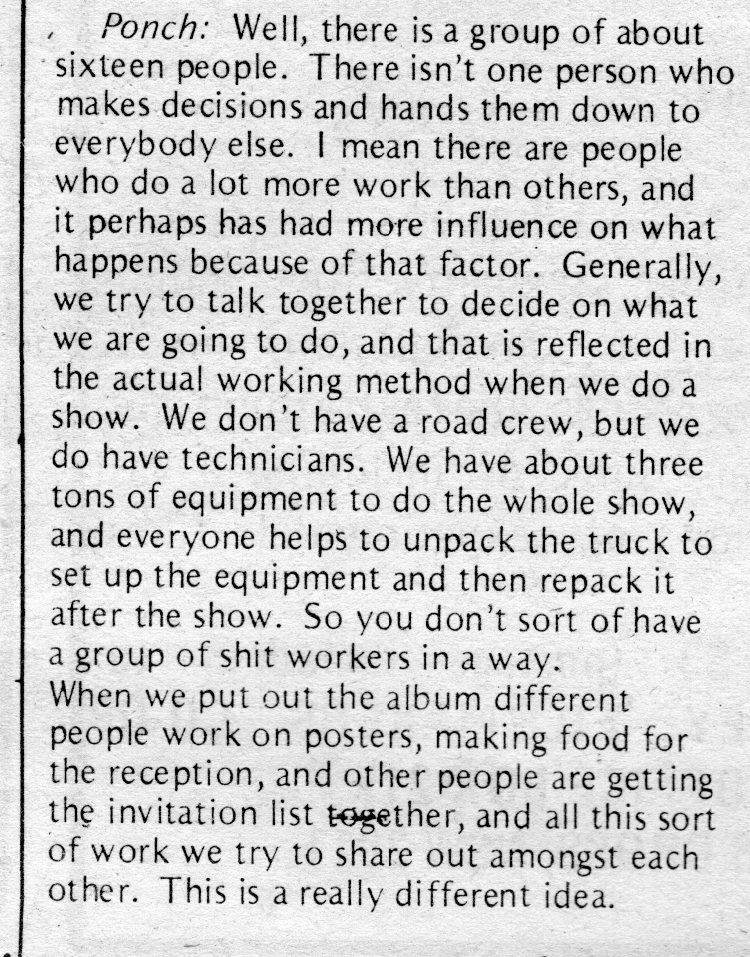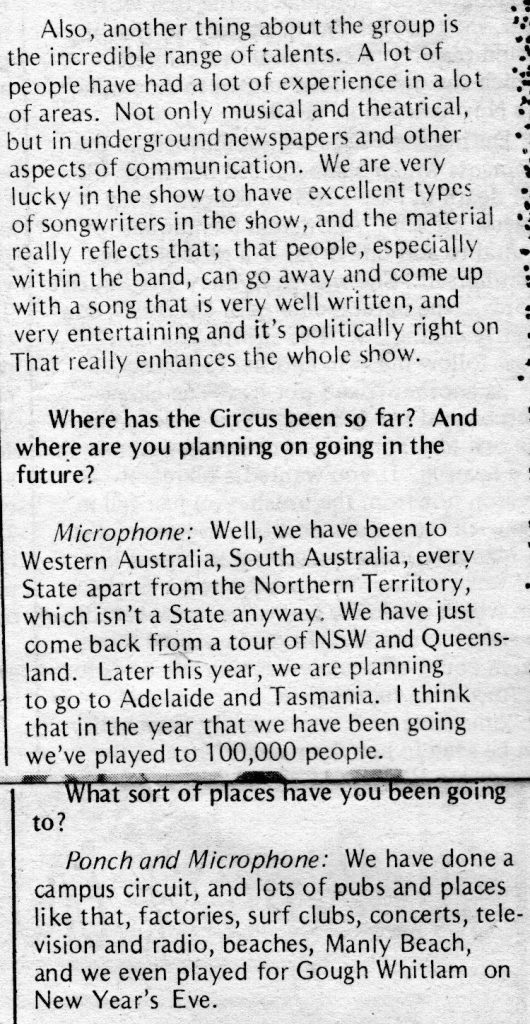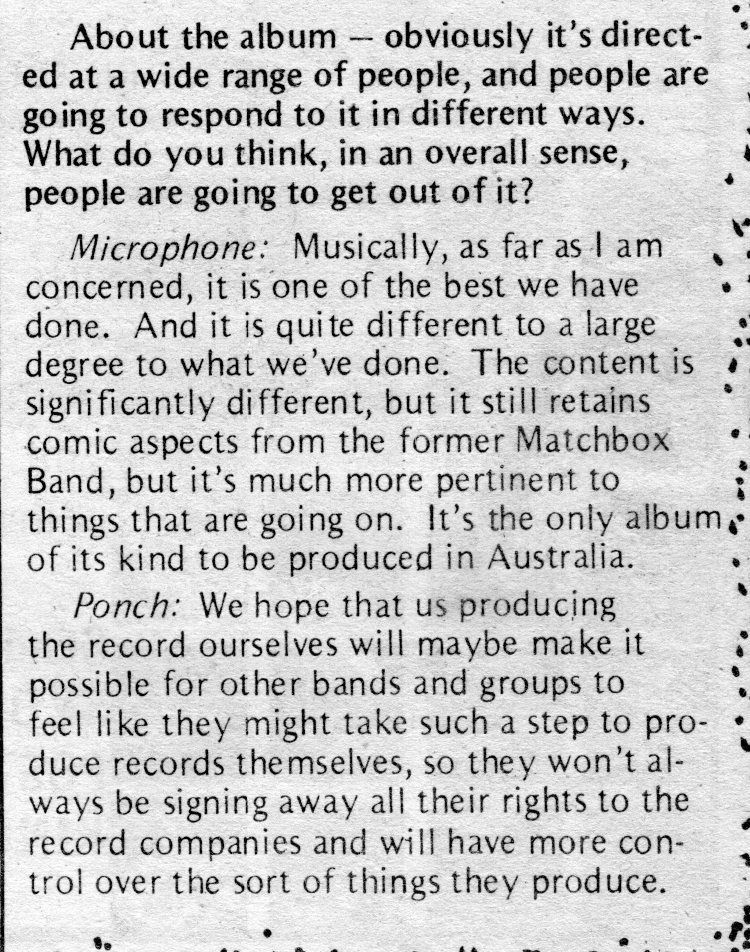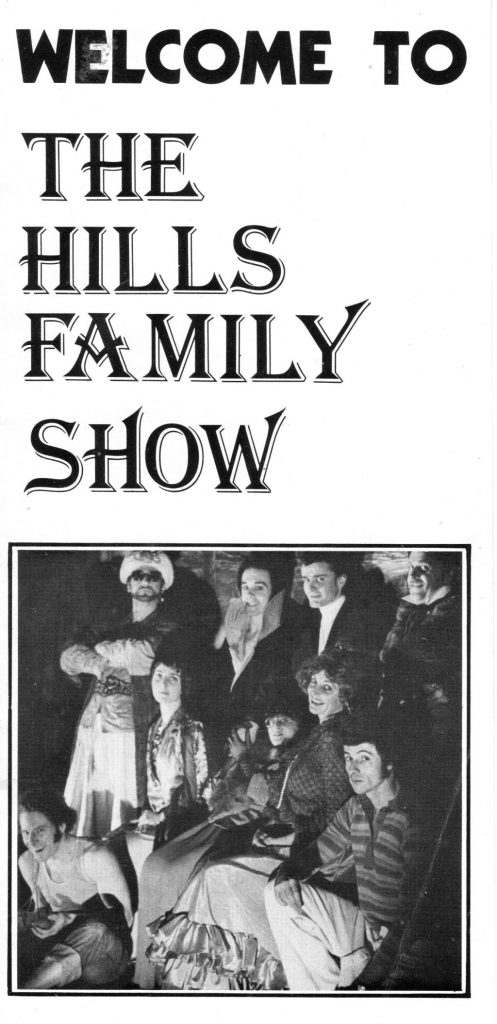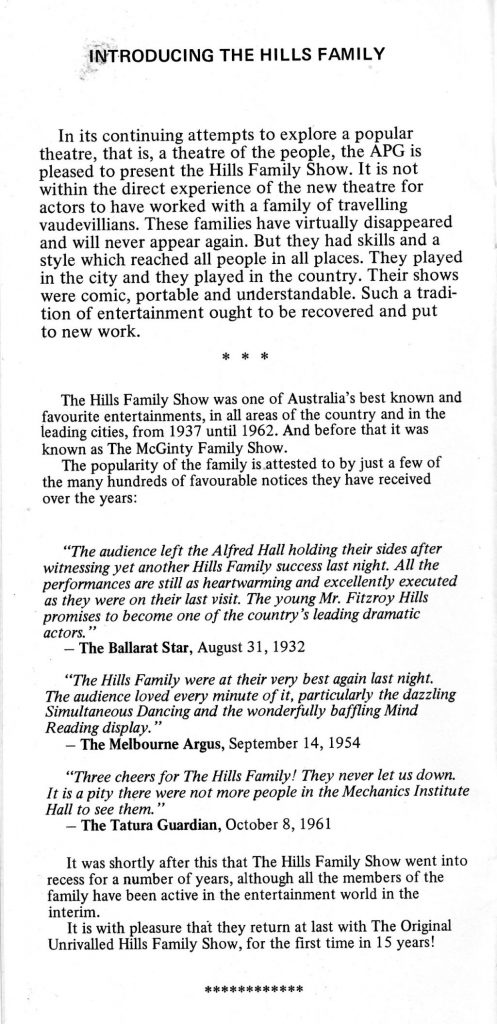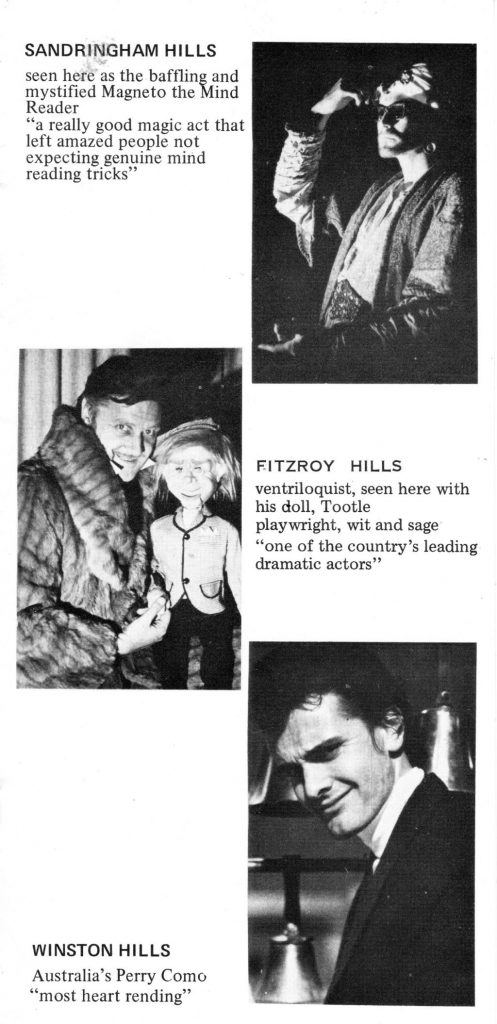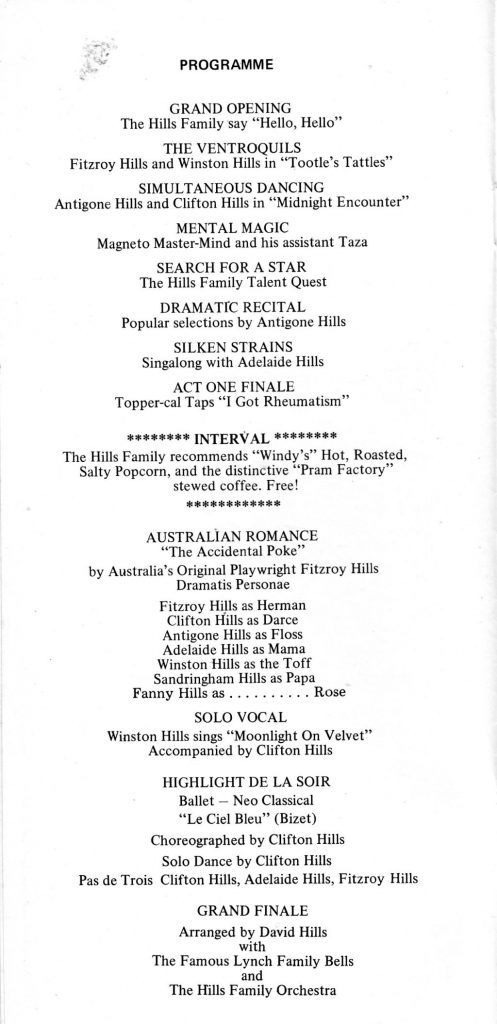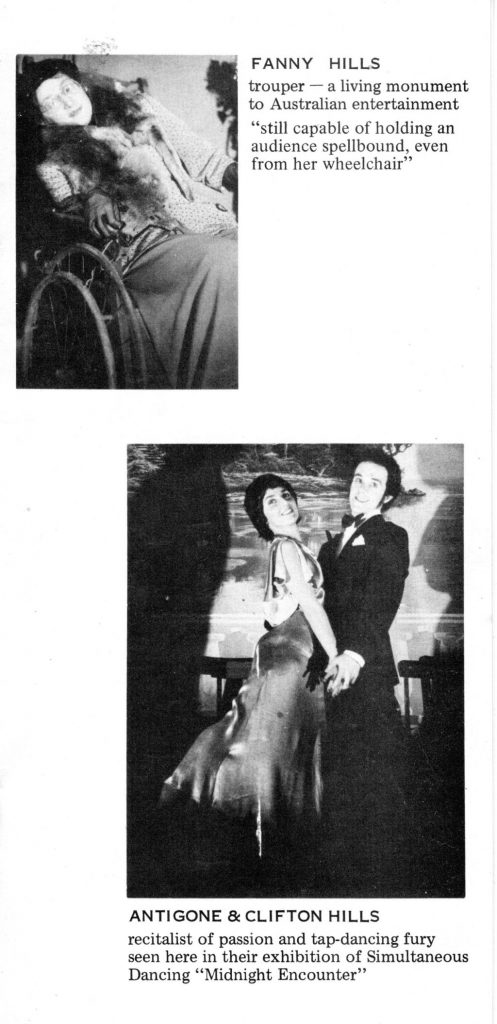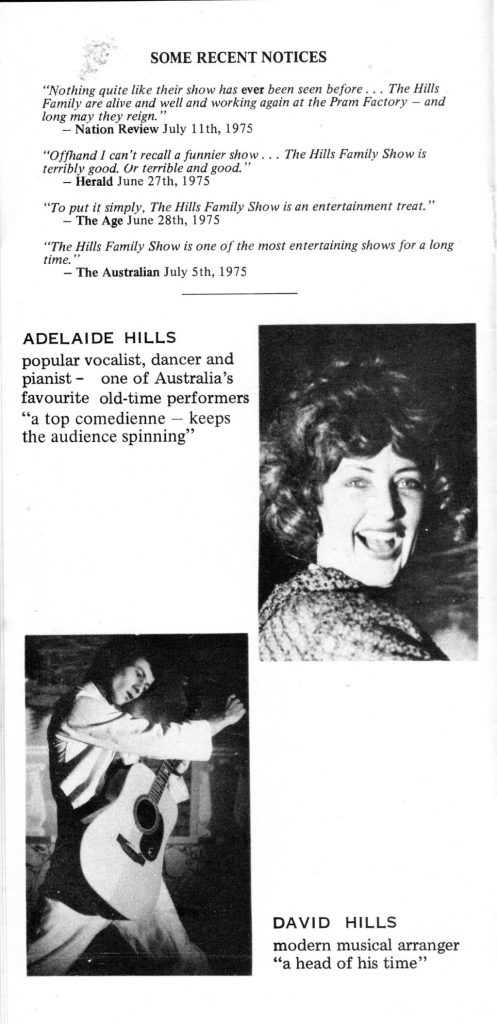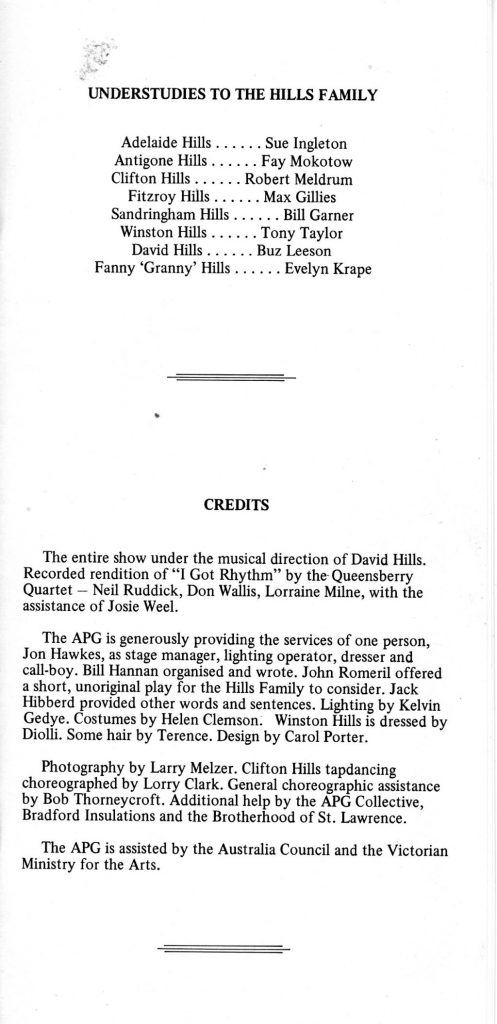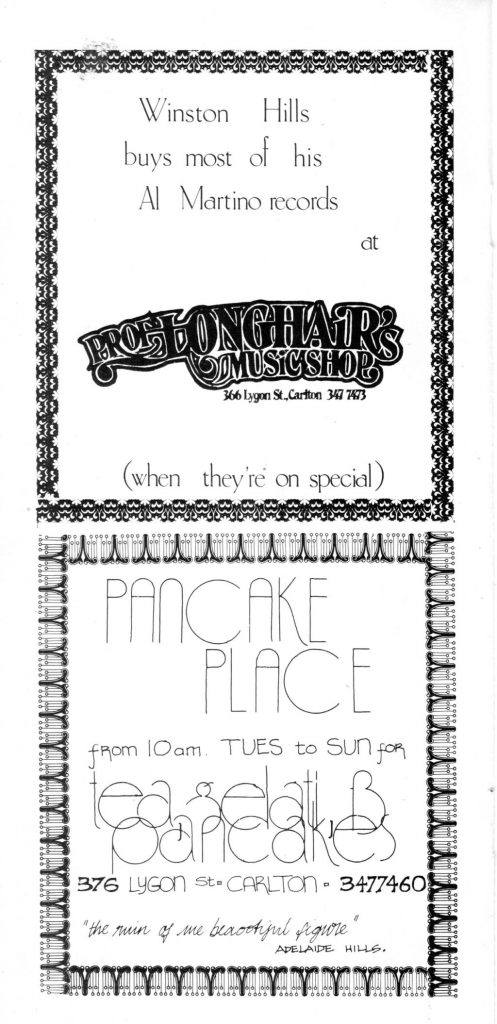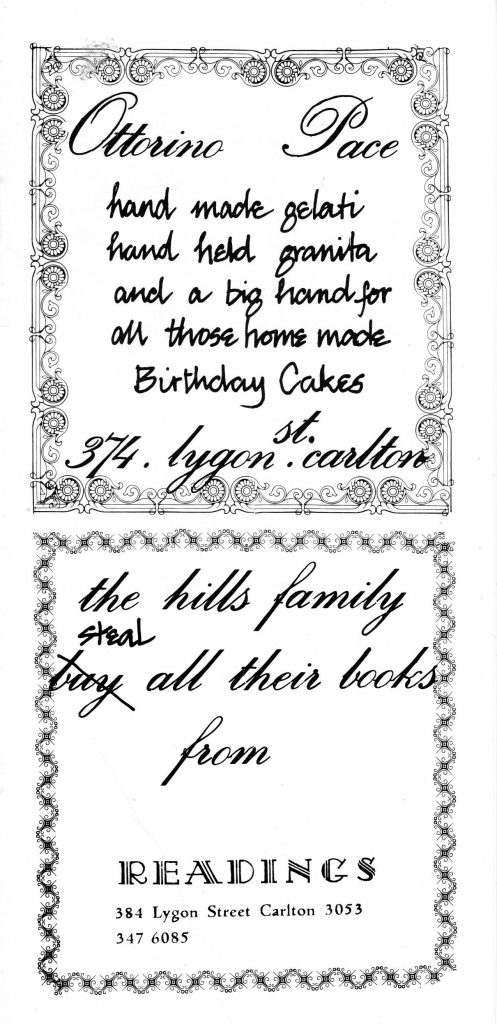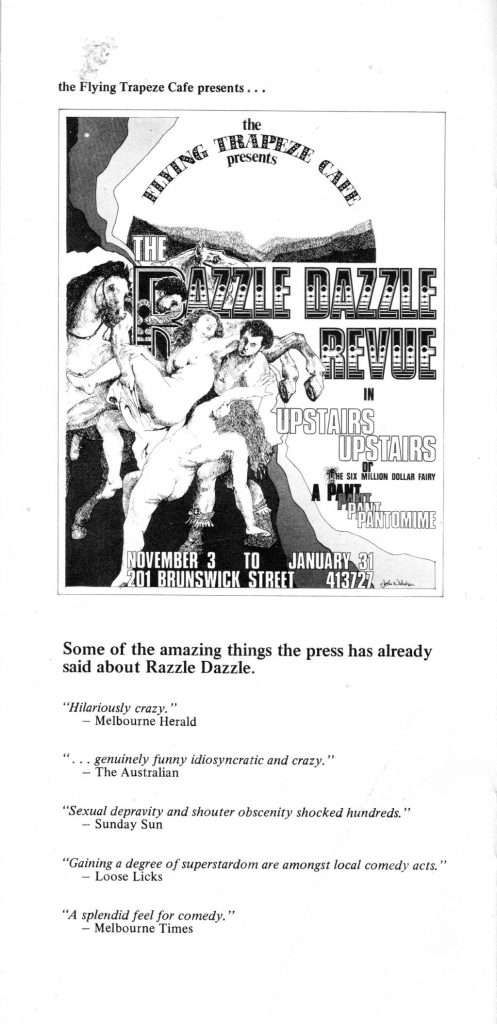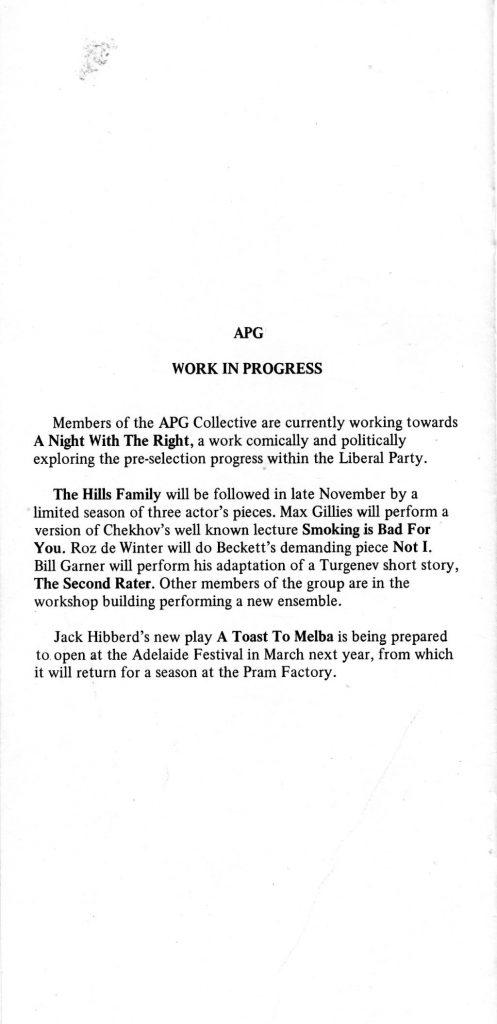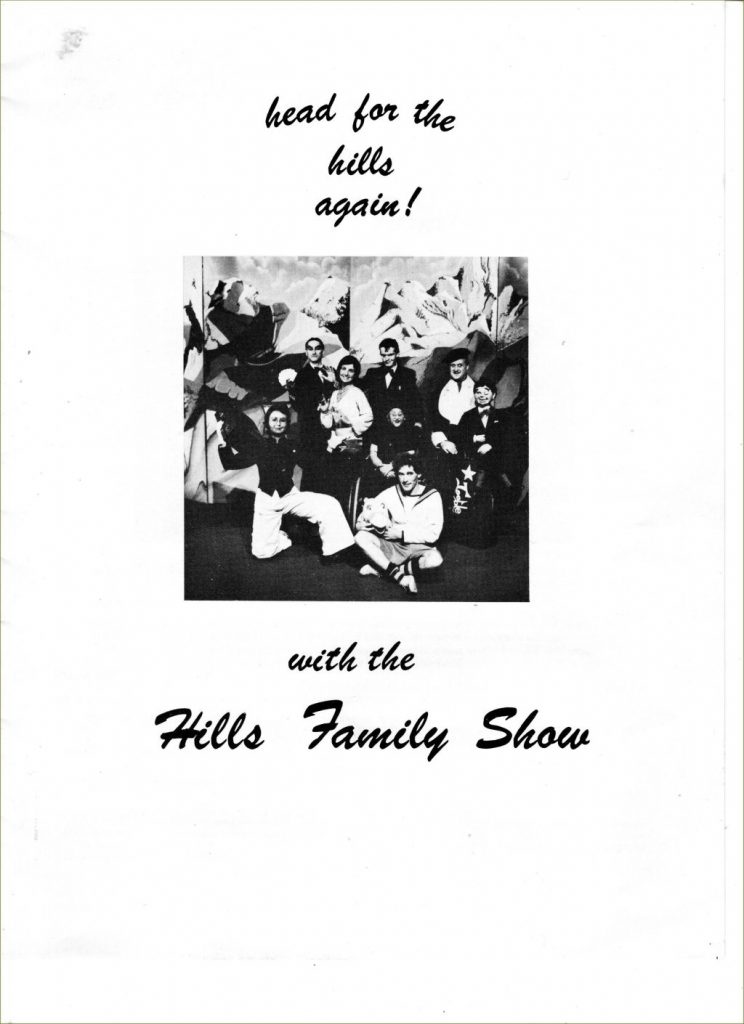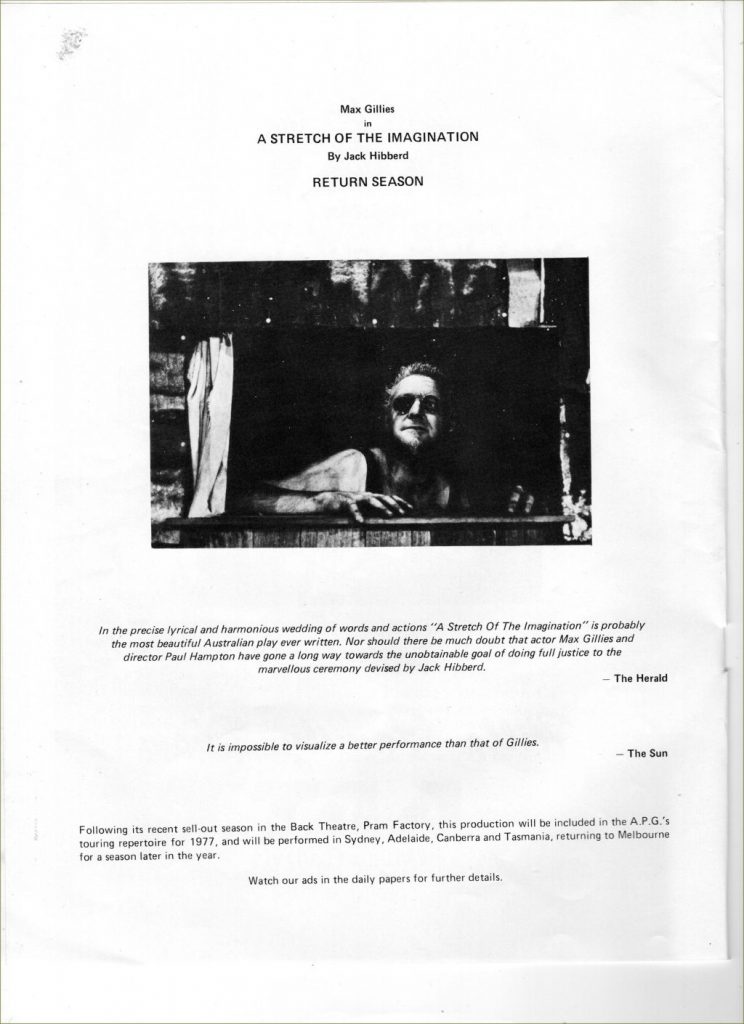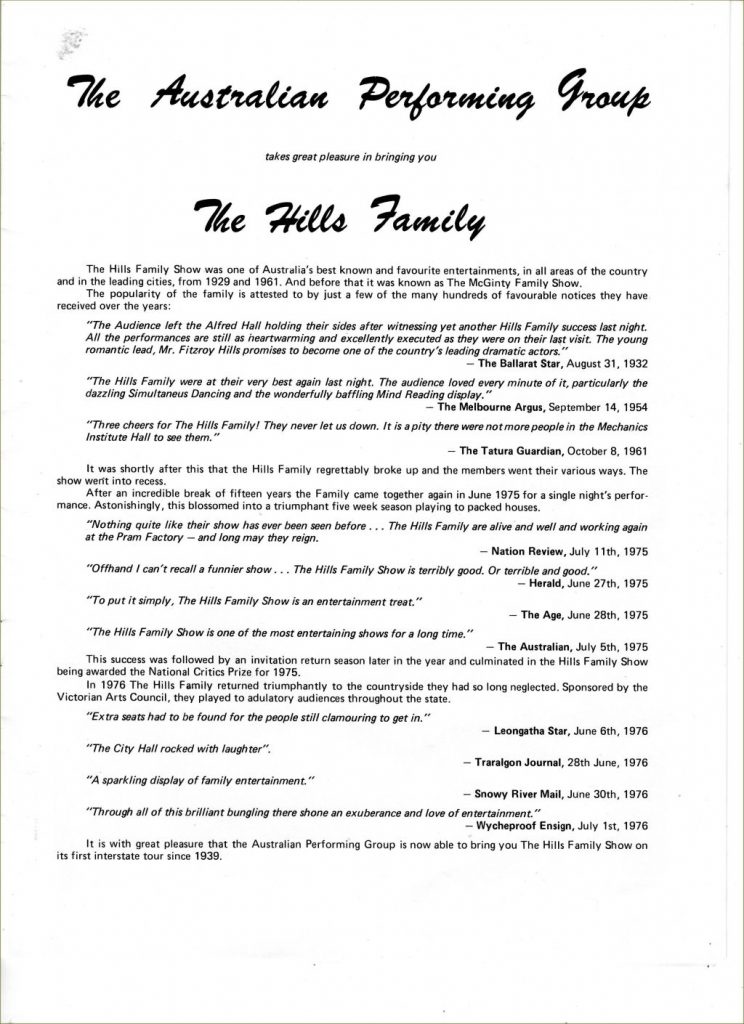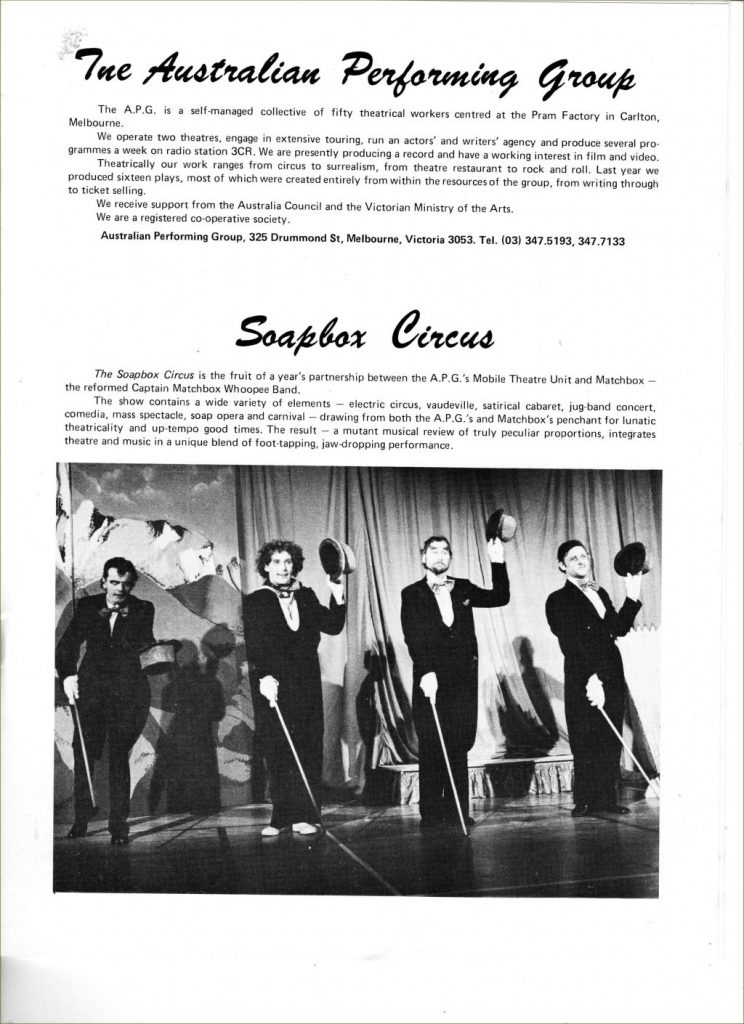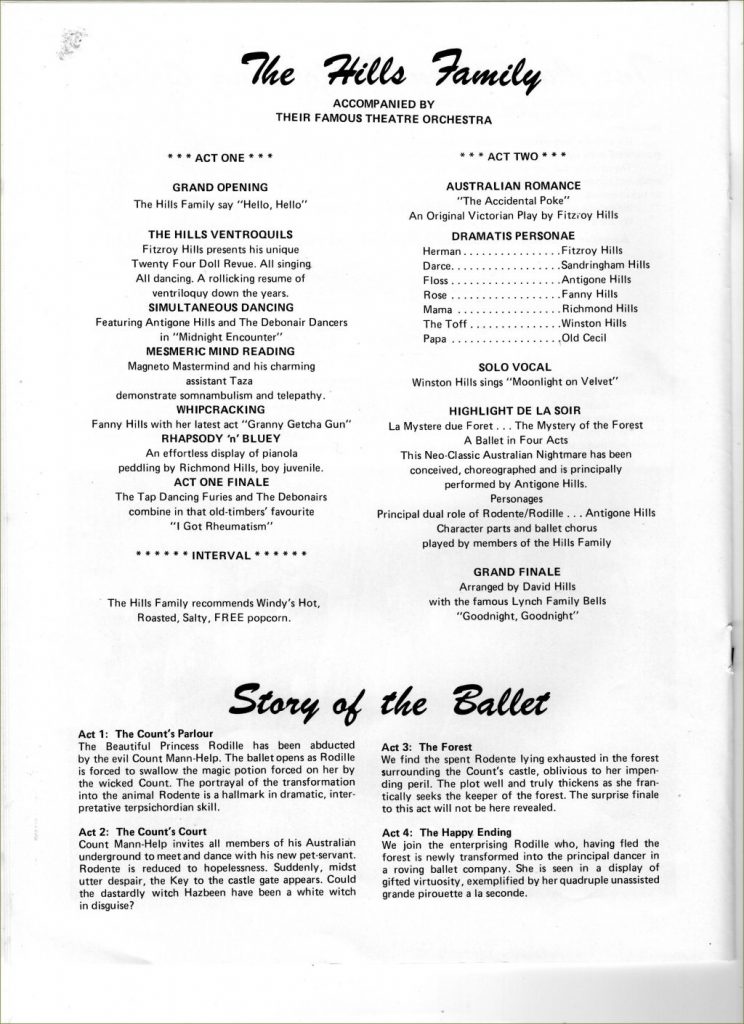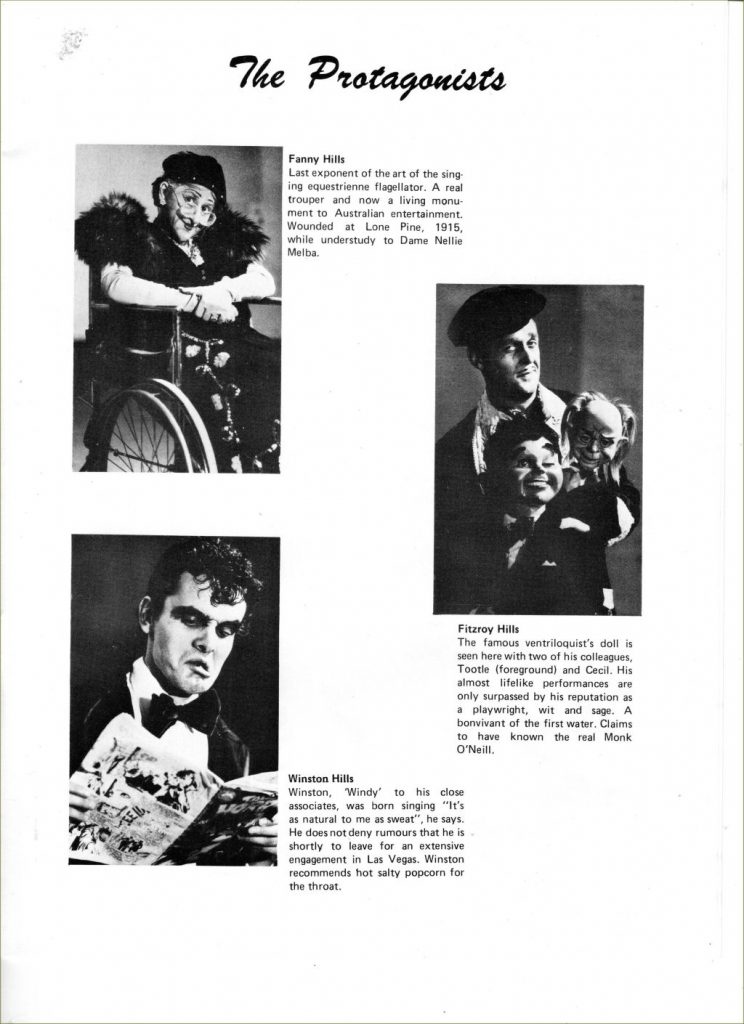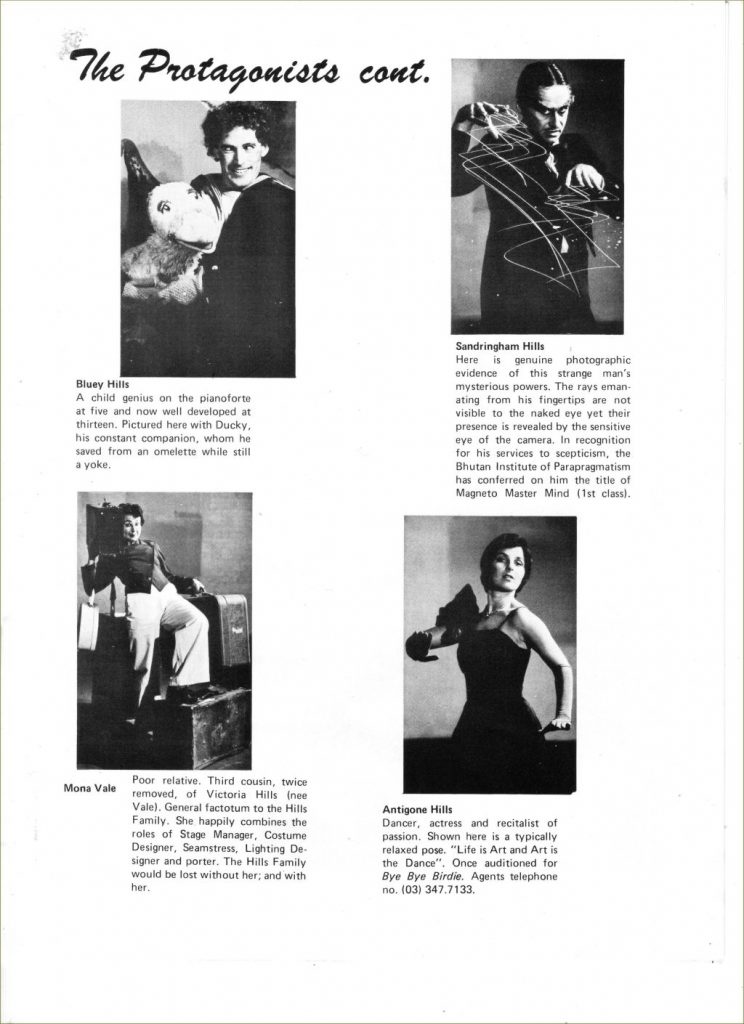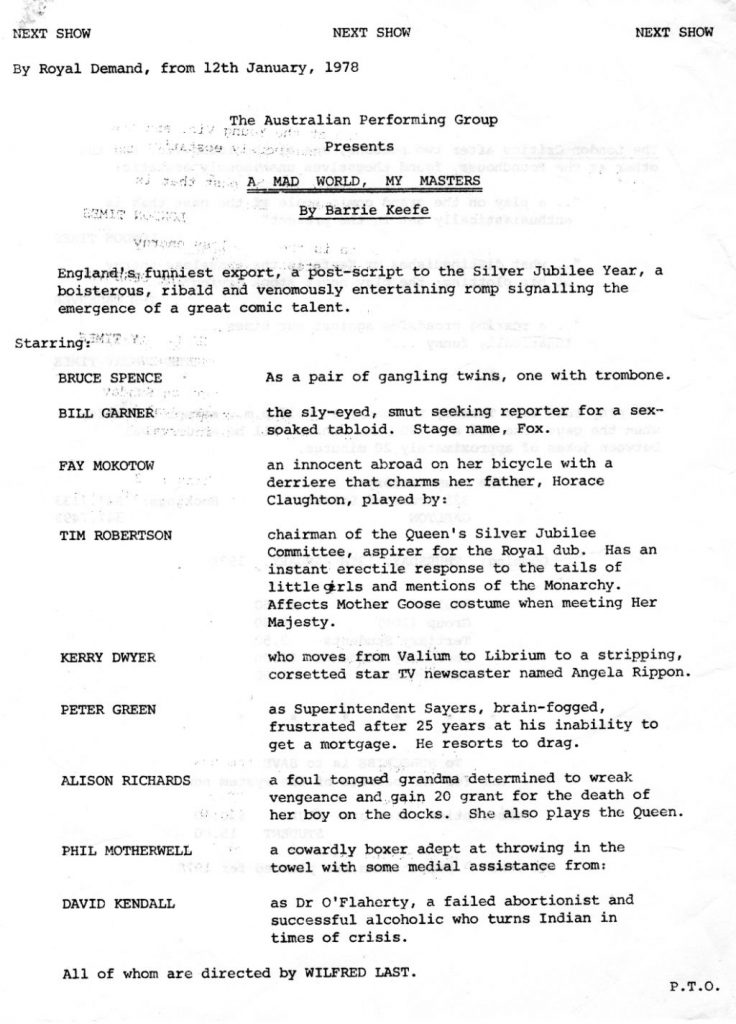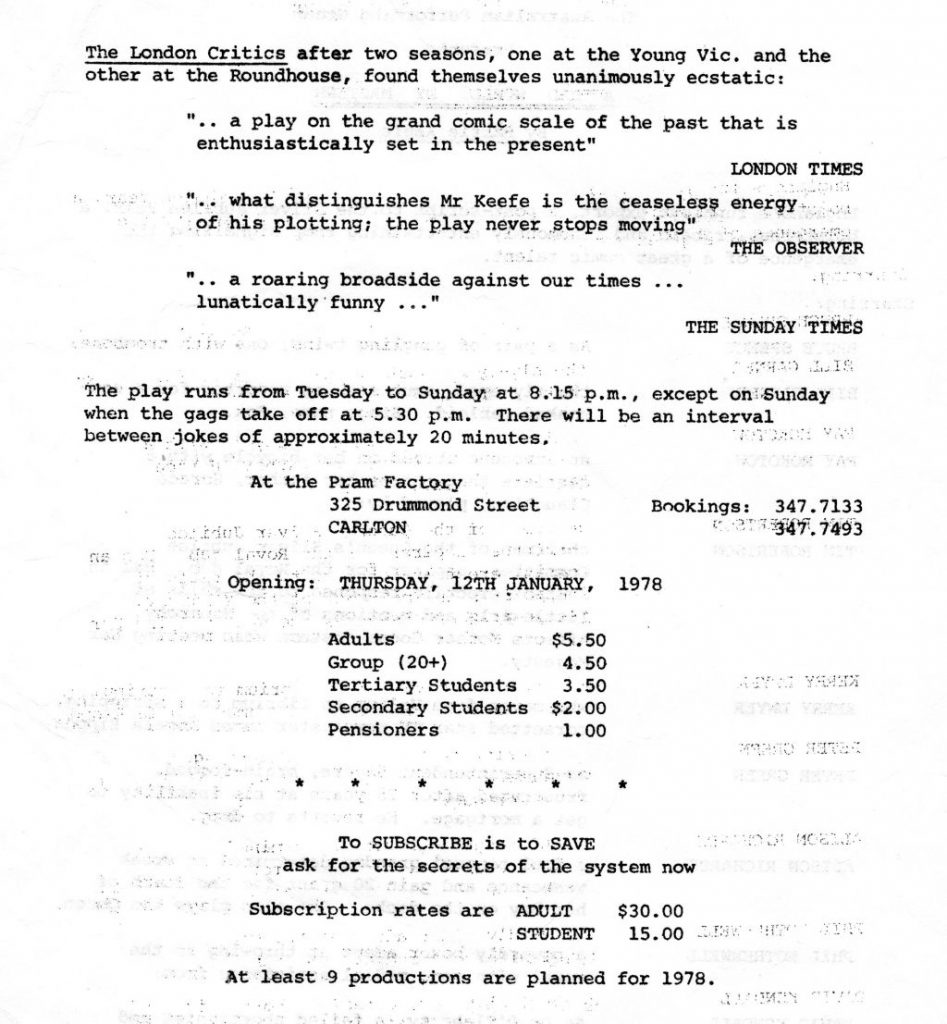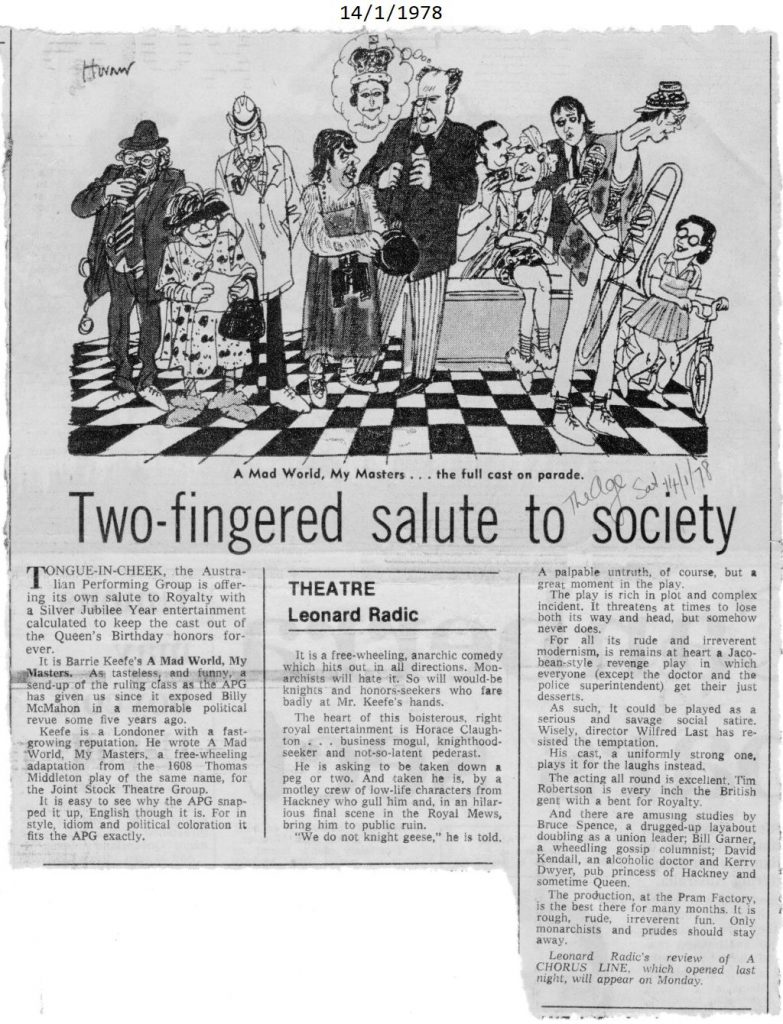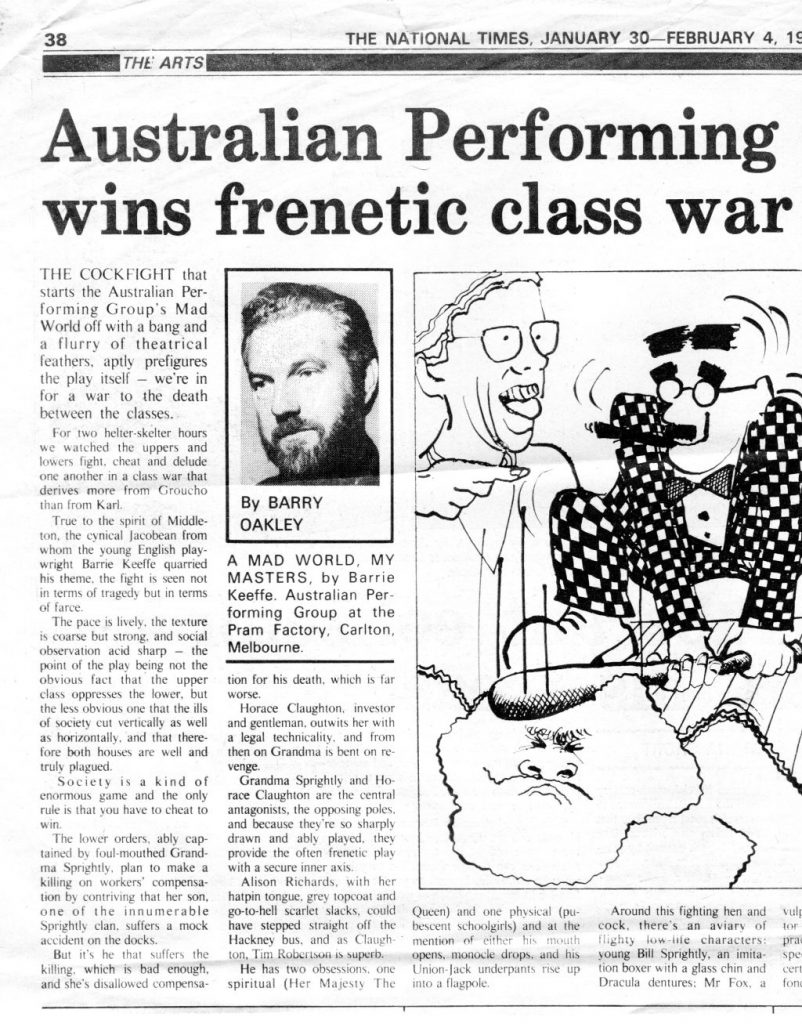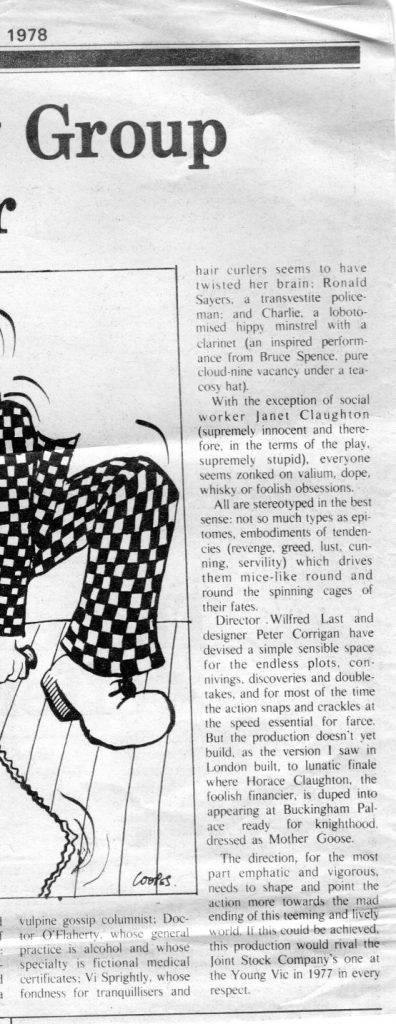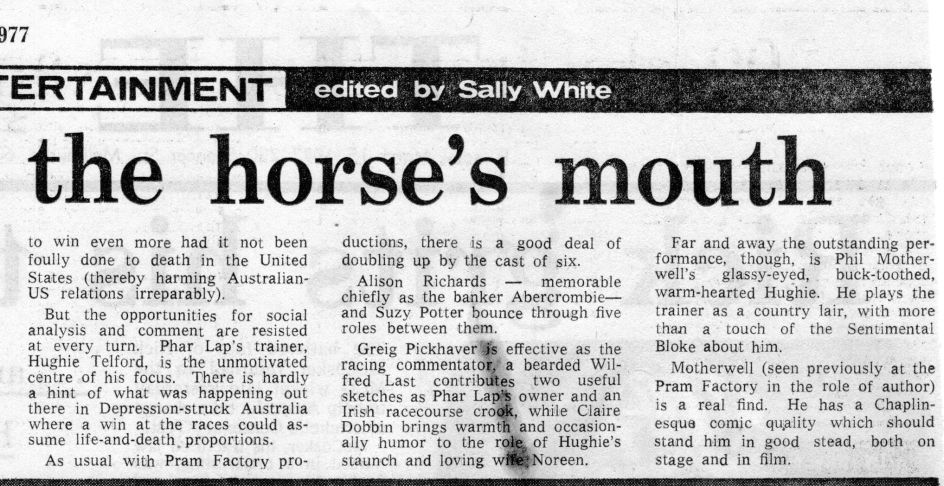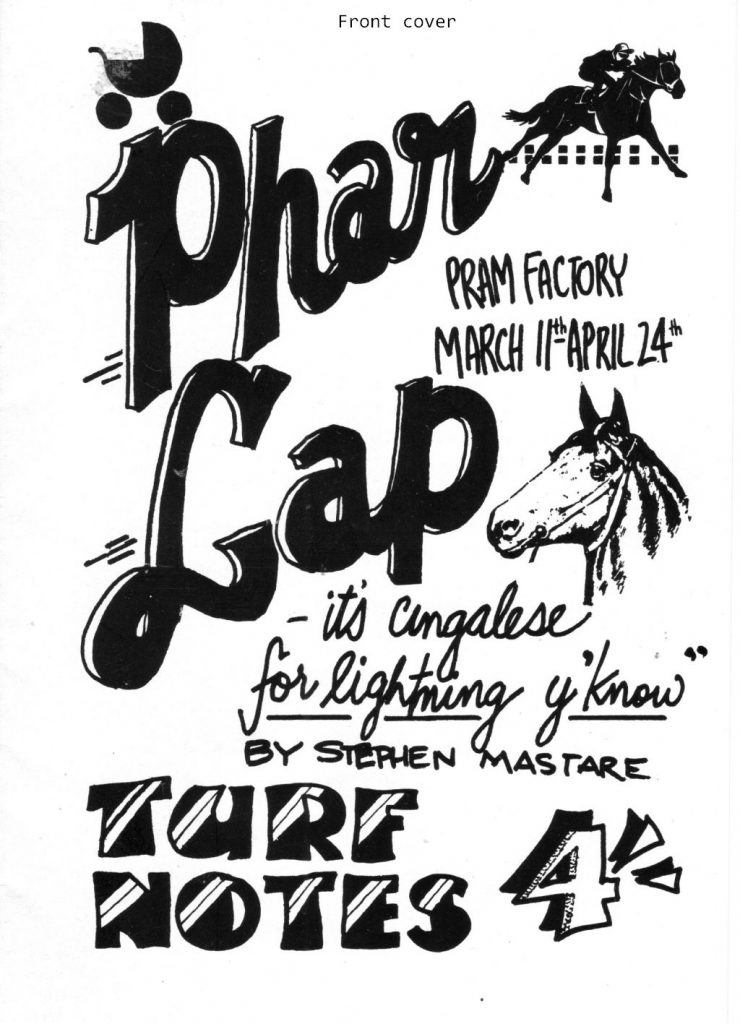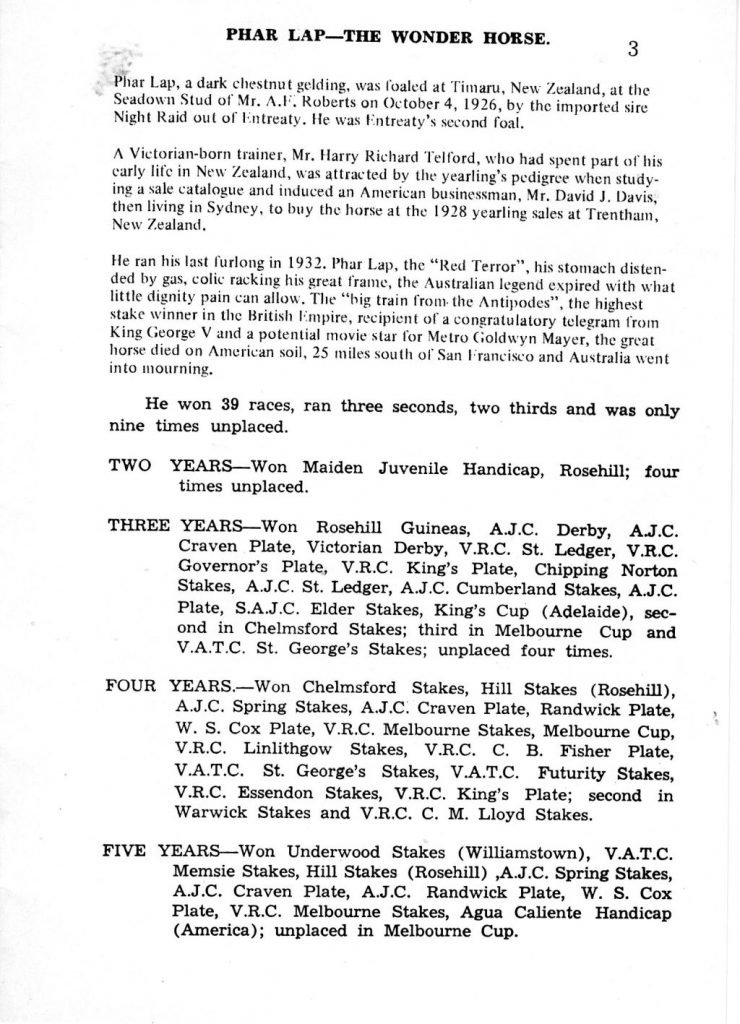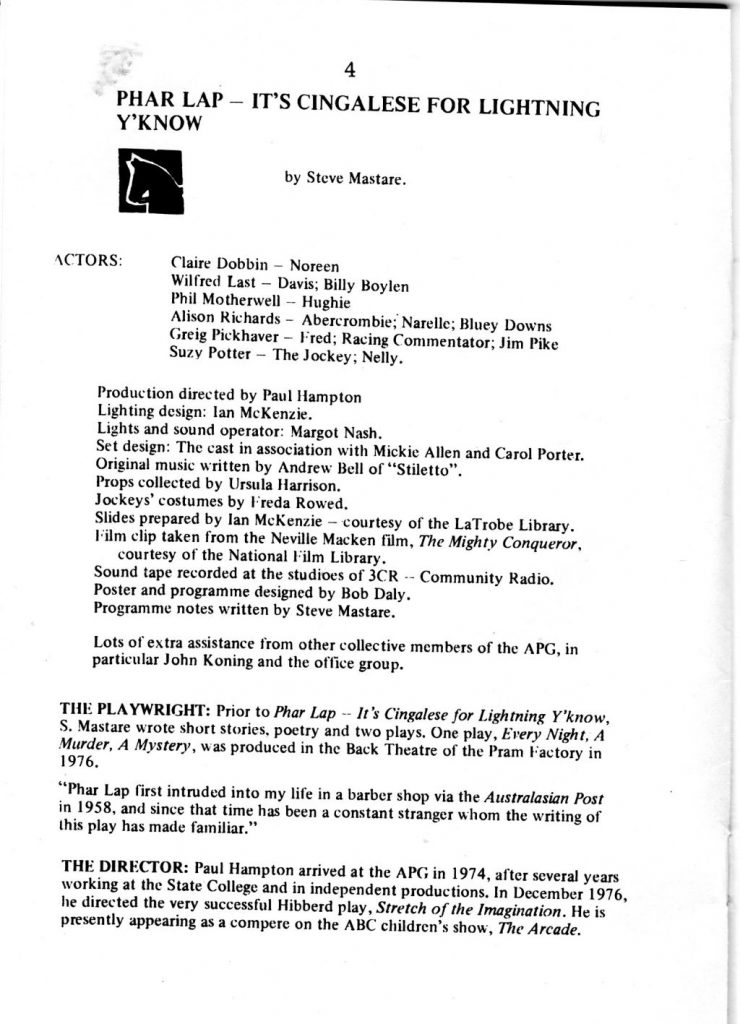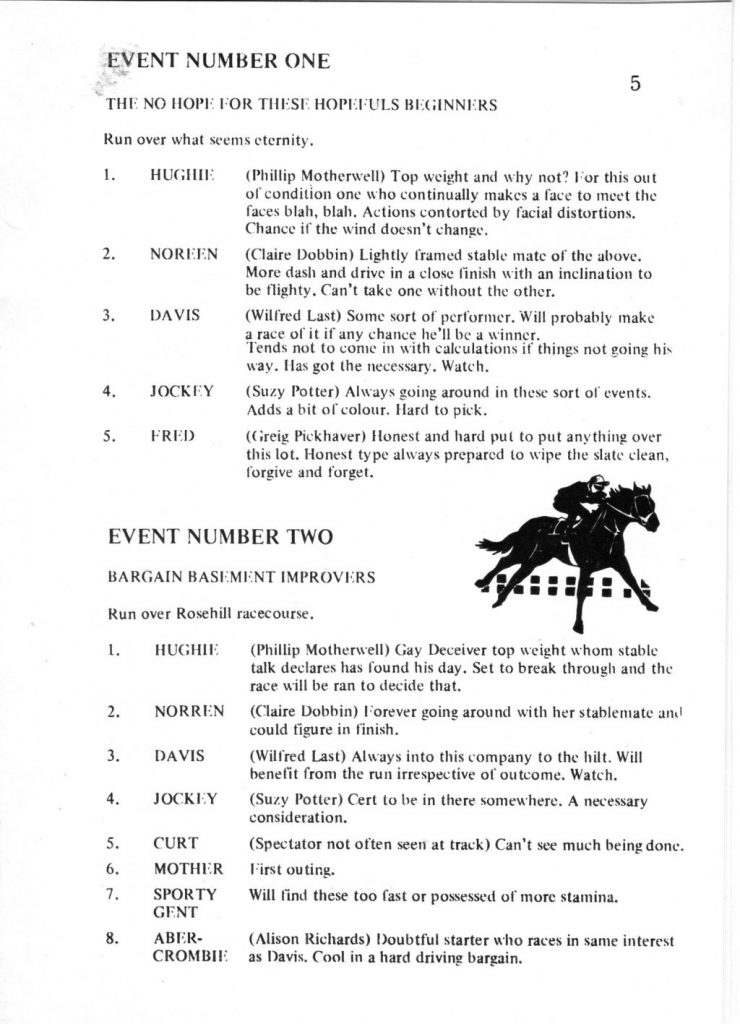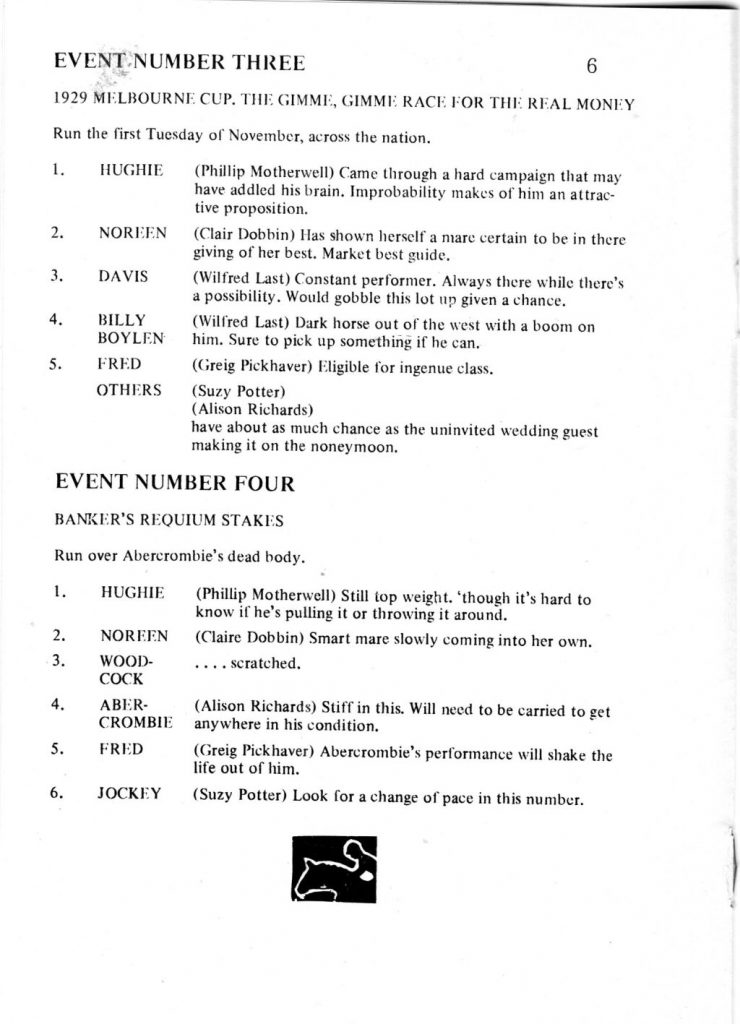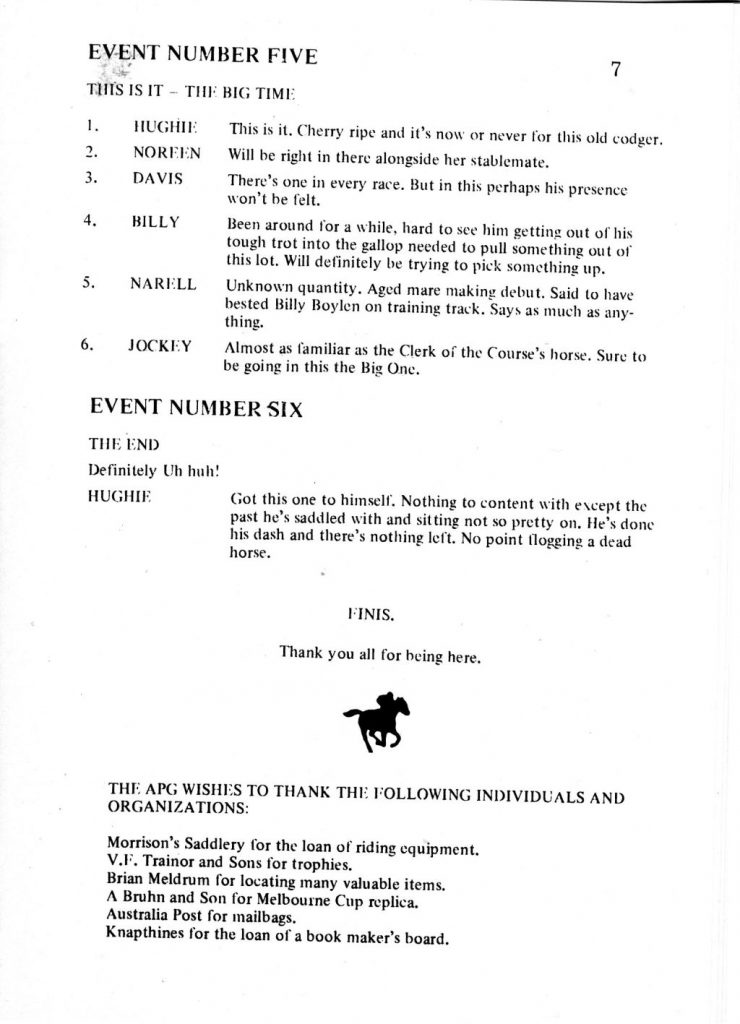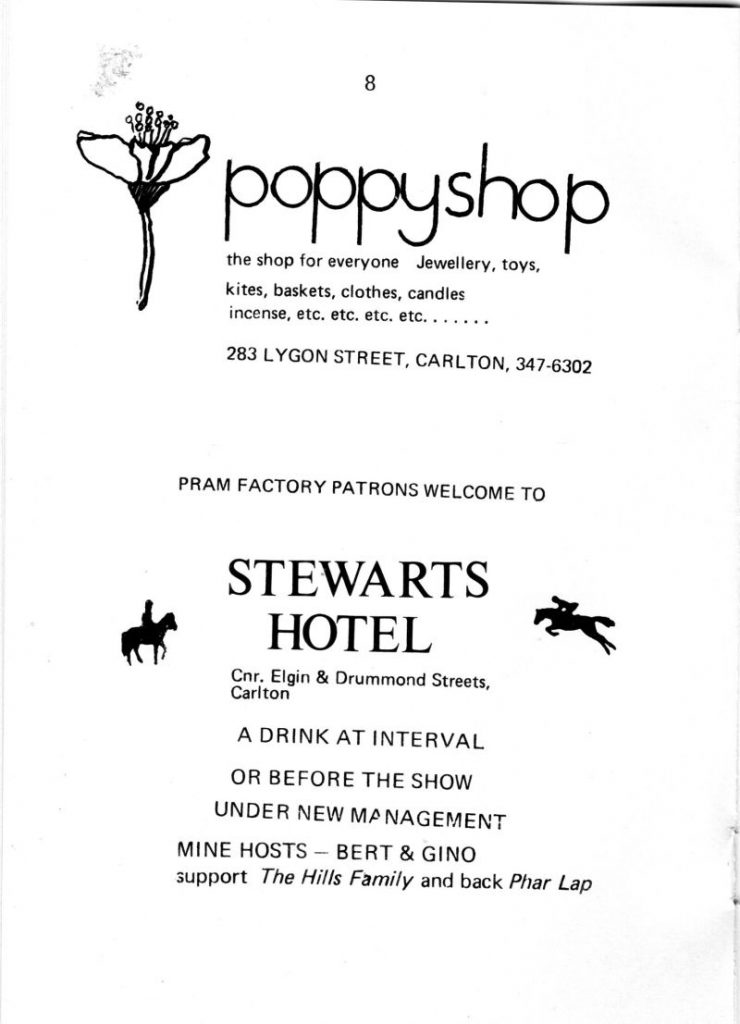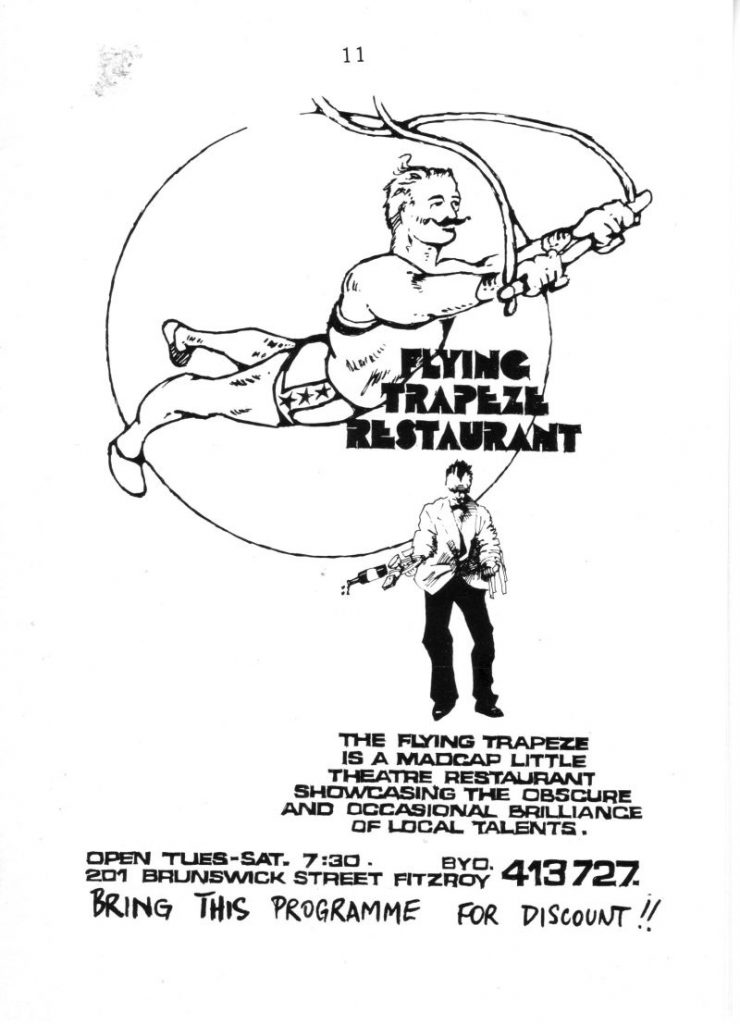Featured in this post is a copy of a report by the Australian Performing Group’s Programming Committee. It was presented to members at the Collective Programming Meeting held 4/11/1976. As can be seen, the report raises a state of affairs that was bothering the Committee. The report is layed out as follows:
- The Critique
- Loss of vigor, energy, enthusiasm and “Australianess”
- Losing touch with the reality of “out there”
- Loss of identity
- Ad hoc and isolationist work methods
- Lack of hard analysis before, during and after productions
- Confused choice of material
- Lack of direction
- Disintegration of design
- Absurd use of personnel
- Short rehearsal periods
- The New Methodology
- General workshops for whole collective
- Deeper engagement with material before final choice
- More preparation prior to beginning rehearsal
- More extensive use of open rehearsal
- In- & post- production analysis
- Criteria for choice of material
- Community relevance and benefit
- Innovation
- Critical stance towards existing social structures
- Exploit the uniqurness of the group
- Recognize the limitations of the group
- A new role for the Programming Committee
Note: The handwritten notes on the report are mine and were made during or before the meeting. The first lot of notes show the time the discussion took place. The notes at the end could be suggestions I had.
Continue reading
